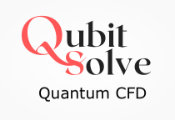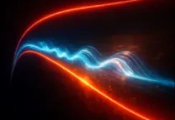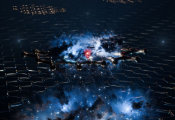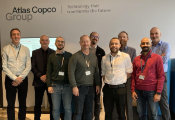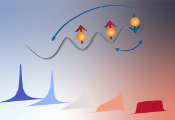Introducing Coherent State Superpositions in Non-Linear Optics
January 07, 2025 -- Superposition is a fundamental principle of quantum mechanics. It states that if a quantum system can exist in two distinct states (A or B), it can also be in any superposition of the two, leaving the system’s exact state (A or B) undefined. This principle, when applied to coherent states —those that closely mimic the behavior of classical light—, leads to quantum light. And it turns out that the superposition of coherent states offers profound opportunities for advancing quantum science and technology. In particular, the applicability of coherent state superpositions in the field of nonlinear optics holds great promise for addressing unanswered questions and uncovering novel phenomena in quantum physics, quantum optics and quantum information.
However, nonlinear processes require extremely strong laser fields with a high mean number of photons to occur. This poses two major challenges for the integration of these states in nonlinear optics. First, achieving such high intensities while maintaining the non-classical properties of light is exceedingly difficult. And second, standard methods for witnessing the quantum nature of light are only effective at low photon numbers.
Now, a team of researchers from IESL FORTH, Dr. Theocharis Lamprou and Dr. Paraskevas Tzallas, and ICFO, Dr. Javier Rivera-Dean, Philipp Stammer and ICREA Prof. Maciej Lewenstein, has successfully addressed both issues. They created generalized coherent state superpositions (GCSS), verified their quantum nature and employed them to drive a nonlinear optical process (which, per se, is indicative of the high photon number and intensity of the states). Their findings, demonstrated both theoretically and experimentally, have been reported in Physical Review Letters.
Using an infrared laser pulse, the team generated GCSS with the highest mean photon number recorded for such states. They then directed this pulse onto an optical crystal, which absorbed the light and re-emitted it as its second harmonic —a frequency-doubled version of the original pulse. This phenomenon was induced by a nonlinear process called second harmonic generation.
“The generation of GCSS using a strong-field process was first observed in an earlier study from 2021. While these results suggested the potential for high-photon numbers, direct evidence was still lacking”, explains Dr. Javier Rivera. “In this work, we close that gap by demonstrating the high-photon number nature of GCSS through their ability to drive nonlinear optical processes”, he adds.
Bridging quantum optics and strong field physics
The study in itself already represents a fundamental application. It shows that, by combining quantum optics with strong-field physics —the field that explores how matter interacts with highly intense laser fields—, one can create intense laser fields with non-classical photon statistics, capable of driving nonlinear optical processes.
But the integration of these two disciplines, long sought after by researchers in both fields, opens further exciting possibilities. Quantum information science, for instance, which already overlaps with quantum optics, could benefit from incorporating strong-field physics. Similarly, attosecond science, which relies on high-intensity laser fields, might advance by leveraging quantum features often overlooked in traditional approaches.
Moreover, the team developed an approach that was free from decoherence effects. Decoherence, a process where quantum states lose their quality due to interactions with the environment, is a major obstacle for the vast majority of quantum information tasks. Developing quantum states that are resilient to decoherence or techniques to mitigate its effects is thus essential for advancing practical quantum technologies. Therefore, the states generated in the work, as well as the methods used to create them, could play a key role in overcoming the decoherence problem.

